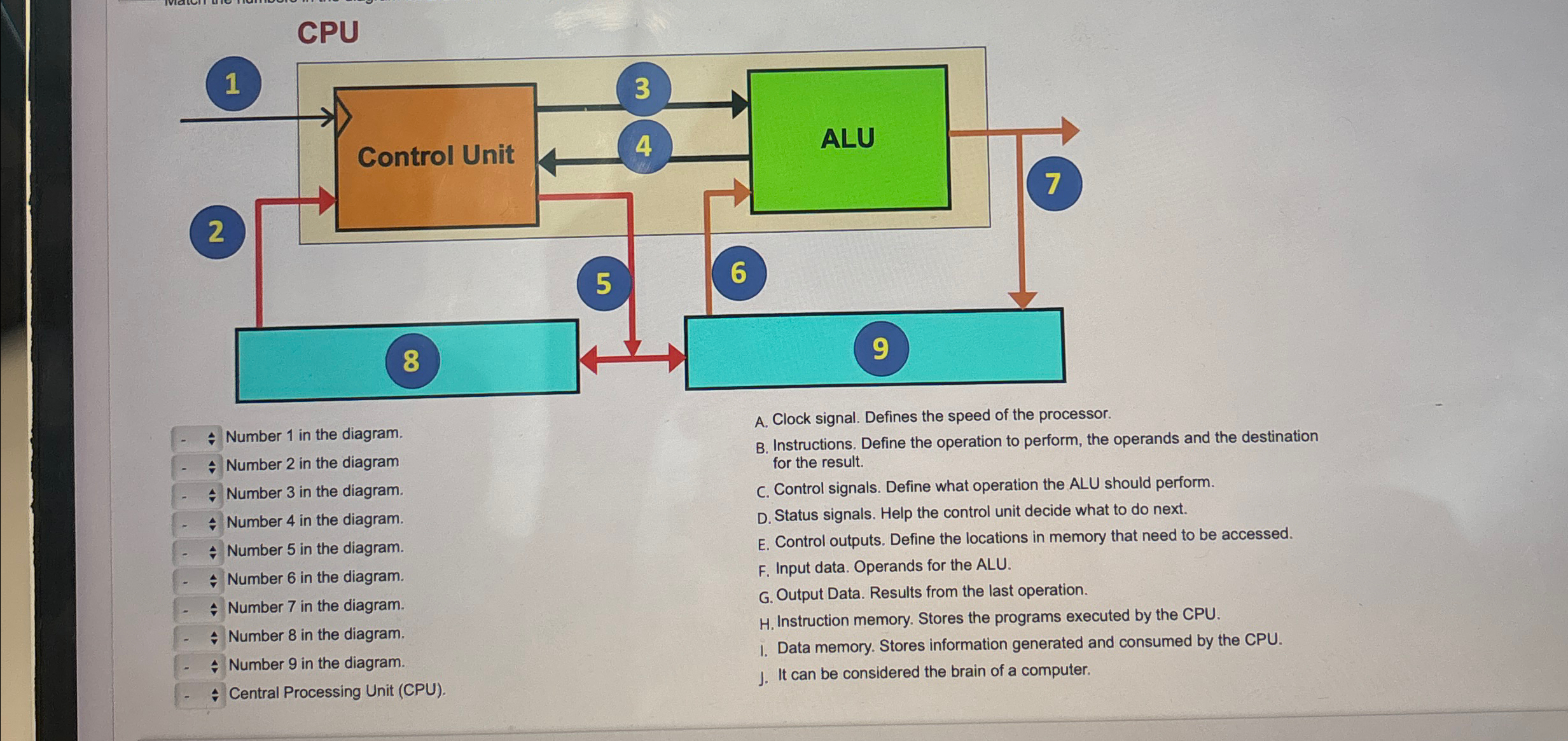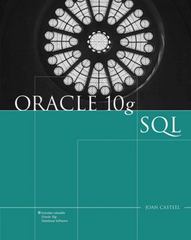Answered step by step
Verified Expert Solution
Question
1 Approved Answer
CPU Number 1 in the diagram. Number 2 in the diagram Number 3 in the diagram. Number 4 in the diagram. . darr Number 5
CPU
Number in the diagram.
Number in the diagram
Number in the diagram.
Number in the diagram.
darr Number in the diagram.
hat Number in the diagram.
hat Number in the diagram.
hat Number in the diagram.
hat Number in the diagram.
Central Processing Unit CPU
A Clock signal. Defines the speed of the processor.
B Instructions. Define the operation to perform, the operands and the destination for the result.
C Control signals. Define what operation the ALU should perform.
D Status signals. Help the control unit decide what to do next.
E Control outputs. Define the locations in memory that need to be accessed.
F Input data. Operands for the ALU.
G Output Data. Results from the last operation.
H Instruction memory. Stores the programs executed by the CPU.
Data memory. Stores information generated and consumed by the CPU.
J It can be considered the brain of a computer.

Step by Step Solution
There are 3 Steps involved in it
Step: 1

Get Instant Access to Expert-Tailored Solutions
See step-by-step solutions with expert insights and AI powered tools for academic success
Step: 2

Step: 3

Ace Your Homework with AI
Get the answers you need in no time with our AI-driven, step-by-step assistance
Get Started


